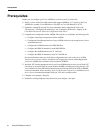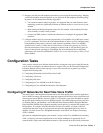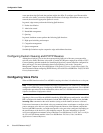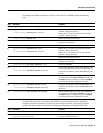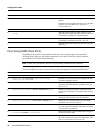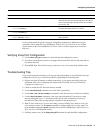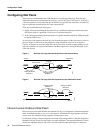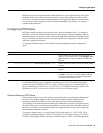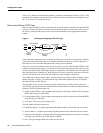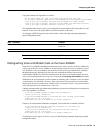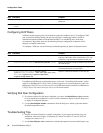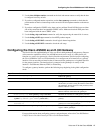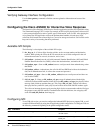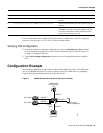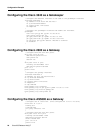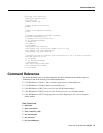
Configuration Tasks
14
Cisco IOS Release 12.0(7)T
prefix, “9,” to the front of the remaining numbers, so that the actual numbers dialed is “9, 2222.” The
comma in this example means that the router will pause for one second between dialing the “9” and
the “2” to allow for a secondary dial tone.
Direct Inward Dial for POTS Peers
Direct inward dial (DID) is used to determine how the called number is treated for incoming POTS
call legs. As shown in Figure 5, incoming means from the perspective of the router. In this case, it is
the call leg coming into the access server to be forwarded through to the appropriate destination
pattern.
Figure 5 Incoming and Outgoing POTS Call Legs
Unless otherwise configured, when a call arrives on the access server, the server presents a dial tone
to the caller and collects digits until it can identify the destination dial peer. After the dial peer is
identified, the call is forwarded through the next call leg to the destination.
There are cases where it might be necessary for the server to use the called-number (DNIS) to find
a dial peer for the outgoing call leg—for example, if the switch connecting the call to the server has
already collected the digits. DID enables the server to match the called-number with a dial peer and
then directly place the outbound call. With DID, the server does not present a dial tone to the caller
and does not collect digits; it forwards the call directly to the configured destination.
To use DID and incoming called-number, a dial peer must be associated with the incoming call leg.
Before doing this, it helps if you understand the logic behind the algorithm used to associate the
incoming call leg with the dial peer.
The algorithm used to associate incoming call legs with dial peers uses three inputs (which are
derived from signaling and interface information associated with the call) and four defined dial peer
elements. The three signaling inputs are:
• Called-number (DNIS)—Set of numbers representing the destination, which is derived from the
ISDN setup message or CAS DNIS.
• Calling-number (ANI)—Set of numbers representing the origin, which is derived from the ISDN
setup message or CAS DNIS.
• Voice port—The voice port carrying the call.
The four defined dial peer elements are:
• Destination pattern—A pattern representing the phone numbers to which the peer can connect.
• Answer address—A pattern representing the phone numbers from which the peer can connect.
• Incoming called-number—A pattern representing the phone numbers that associate an incoming
call leg to a peer based on the called-number or DNIS.
• Port—The port through which calls to this peer are placed.
PBX
Cisco AS5800
Incoming
call leg
Outgoing
call leg
Cisco AS5800
PBX
22356
IP
cloud



